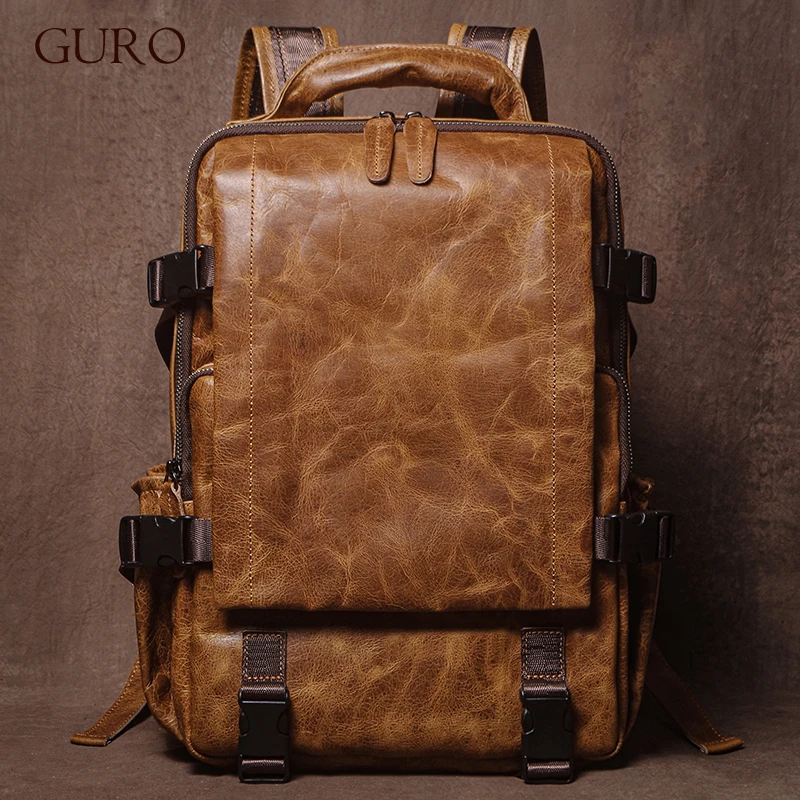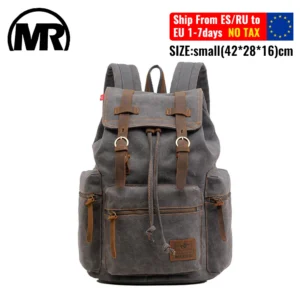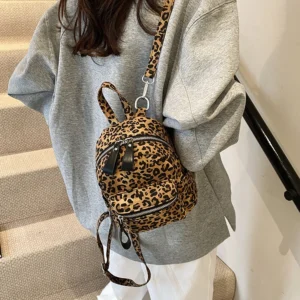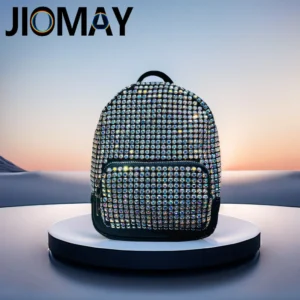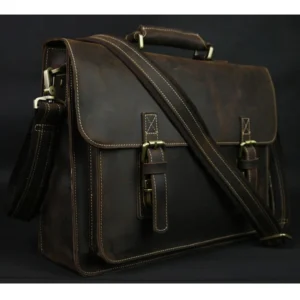1. Introduction: Why Organization Matters in a Premium Leather Backpack
Have you ever found yourself digging frantically through your backpack, searching for keys or a phone that seems to have vanished into thin air? That moment of frustration is exactly why organized compartments in leather backpacks aren’t just a luxury—they’re essential.
An organized leather backpack is one that thoughtfully distributes space with dedicated compartments, pockets, and dividers that serve specific purposes. Rather than a single cavernous space where items jumble together, a well-organized backpack creates a home for everything you carry.
The difference between organized and disorganized bags is striking:
- Time saved: No more 30-second scrambles turning into 5-minute searches
- Item protection: Prevents scratches on electronics or crushing of delicate items
- Professional appearance: Maintains a polished look without bulges or disorganized retrieval
- Peace of mind: Eliminates the nagging worry about whether you packed something important
Imagine arriving at an important meeting and smoothly retrieving your notebook from its dedicated slot instead of awkwardly emptying your bag onto the conference table. Or accessing your water bottle from an external pocket without disturbing your carefully packed travel documents. These small moments of efficiency add up to significant improvements in your daily experience.
In this comprehensive guide, we’ll explore the transformative power of organized compartments in premium leather backpacks, from essential compartment types to matching organizational systems with your lifestyle. Whether you’re a busy professional, frequent traveler, or daily commuter, you’ll discover how thoughtful organization can elevate your leather backpacks from simple carrying solutions to precision tools that enhance your productivity and peace of mind.
2. Key Benefits of Well-Designed Compartments in Leather Backpacks
2.1 Efficiency and Time Management
The hidden cost of disorganization is time—precious minutes lost searching for items that could be better spent elsewhere. Well-designed compartments create a logical system where everything has its place, transforming how efficiently you navigate your day.
When your essentials are organized into dedicated spaces, muscle memory takes over. Without even looking, your hand knows exactly where to find your transit card, house keys, or phone charger. This cognitive offloading—where you no longer need to actively think about where items are—frees mental energy for more important tasks.
Consider these real-world time savings:
– Morning routines streamlined by 5-10 minutes with no frantic searching
– Meeting preparation reduced from minutes to seconds when materials are easily accessible
– Travel stress diminished when passport and boarding passes have dedicated, easily accessible pockets
2.2 Superior Protection for Electronics and Valuables
Modern life demands we carry valuable and sensitive electronics daily. Properly designed compartments don’t just organize these items—they actively protect them.
Dedicated padded laptop sleeves create a cushioned environment that absorbs impacts and prevents damage from drops or bumps. These specialized compartments often feature:
– Padded walls with shock-absorbing materials
– Suspended design that keeps devices from hitting the ground when set down
– Microfiber linings that prevent scratches on screens
– Secure straps or closures that prevent shifting during movement
Beyond electronics, smaller valuables benefit from specialized protection too. Sunglasses pockets with soft linings, watch compartments with cushioning, and waterproof leather backpacks with sealed seams all contribute to comprehensive protection from environmental threats like moisture, dust, and impact.
2.3 Ergonomic Weight Distribution
Poorly distributed weight in a backpack can lead to discomfort, fatigue, and even long-term posture problems. Strategic compartmentalization directly addresses this issue by creating balanced weight distribution across your back.
When heavier items like laptops or books are secured close to your back in dedicated sleeves, and lighter items are positioned in outer compartments, the center of gravity stays close to your body. This alignment works with your natural posture rather than against it.
Effective backpack weight distribution techniques depend on well-designed compartments that:
– Keep heavy items vertical and centered
– Prevent items from shifting during movement
– Distribute weight evenly between both shoulders
– Maintain a slim profile that doesn’t pull you backward
The ergonomic benefits include reduced shoulder strain, minimized back fatigue, and improved posture during extended wear.
2.4 Professional Appearance and Functionality
In professional environments, how you manage your belongings speaks volumes about how you manage your work. A leather backpack with thoughtful organization elevates your professional presence in subtle but impactful ways.
Rather than fumbling through an overstuffed bag during a meeting, organized compartments allow you to discreetly and confidently access exactly what you need. This preparedness projects competence and attention to detail—qualities valued in any professional setting.
The functionality extends beyond impressions to actual performance. When you can quickly locate presentation materials, reference documents, or digital devices, you maintain workflow momentum without distracting interruptions. This seamlessness is particularly valuable during client meetings, interviews, or collaborative sessions where time and attention are precious resources.
3. Essential Compartments in a Premium Leather Backpack: A Comprehensive Breakdown
3.1 Main Storage Compartments: The Foundation of Organization
The main compartment serves as the anchor of your backpack’s organizational system. In premium leather backpacks, these spaces balance flexibility with structure to accommodate varying needs while maintaining order.
Well-designed main compartments typically feature:
– Internal dividers: Creating separate zones for different categories of items
– Reinforced bottoms: Providing structure and protection for heavier items
– Strategic depth: Deep enough for larger items but not so deep that smaller items get lost
– Appropriate access methods: Top-loading designs for security, clamshell designs for complete visibility
The difference between basic and excellent main compartments often comes down to thoughtful proportions. Premium luxury leather backpacks maintain a balance between capacity and accessibility—large enough to hold daily essentials but designed so items don’t simply pile on top of each other.
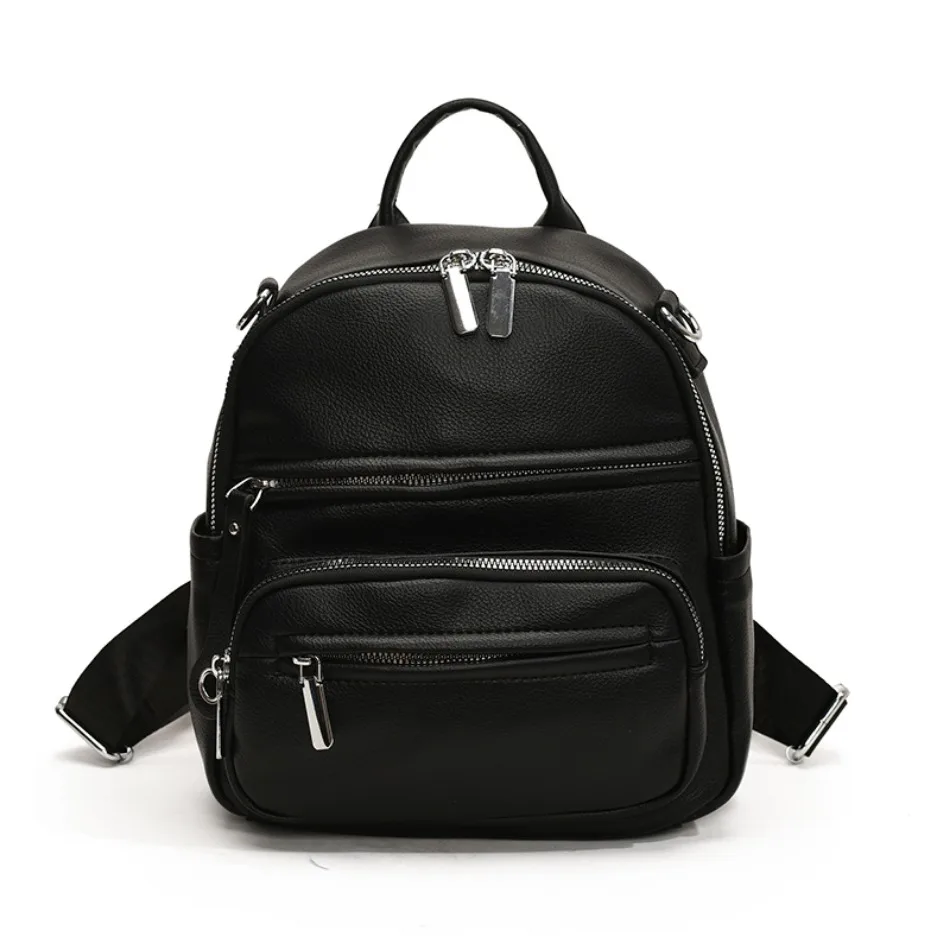
3.2 Dedicated Technology Protection
With technology being central to modern life, specialized protection for electronic devices has become non-negotiable in premium backpacks.
Laptop compartments require particular attention to detail:
– Precise sizing: Snug fit for common laptop dimensions (13-inch, 15-inch, 17-inch)
– Suspension systems: Elevated designs that prevent impact when setting down the bag
– Access orientation: Side-access for quick retrieval without removing other items
– Padding thickness: Minimum 0.5-inch padding for adequate protection
Beyond laptops, comprehensive technology protection includes dedicated spaces for tablets, e-readers, and phones. These smaller devices benefit from:
– Microfiber linings: Preventing screen scratches
– Rigid reinforcement: Protecting against flexing or pressure
– Strategic positioning: Away from items that could cause damage
Cable management systems have also become essential features in leather laptop backpacks, with dedicated pouches for chargers, earbuds, and portable batteries. These systems prevent tangling while keeping technology accessories easily accessible.
3.3 Quick-Access External Compartments
External compartments serve as the interface between your organized system and the outside world, providing convenience without sacrificing security.
Front organizational pockets work best when they include:
– Graduated pocket sizes: Accommodating items from pens to smartphones
– Visibility features: Lighter colored linings that make items easier to see
– Security elements: Hidden zippers or magnetic closures that deter opportunistic theft
Side pockets offer particular utility for frequently accessed items like water bottles, umbrellas, or hand sanitizer. The most functional designs feature:
– Elastic expansion: Accommodating various sizes while securing contents
– Water resistance: Protecting the main compartment from potential leaks
– One-handed accessibility: Allowing retrieval without removing the backpack
Security-focused travelers benefit from hidden back panel pockets—ideal for passports, cash, or other valuables that require extra protection but occasional access.
3.4 Specialized Internal Organization
The interior details of a premium leather backpack reveal the manufacturer’s understanding of user needs. Specialized organizational elements transform a simple bag into a sophisticated carrying system.
Essential internal organizational features include:
– Pen holders: Preventing ink leaks and keeping writing instruments readily available
– Card slots: Securing business cards or transit passes for quick access
– Key leashes: Tethering keys to prevent them from getting lost in larger spaces
– Mesh or transparent pockets: Offering visibility for small items
– RFID-blocking compartments: Protecting digital information on cards and passports
These specialized features are particularly important in mens leather laptop backpacks where professional functionality must balance with elegant design. The best examples incorporate these organizational elements without creating visual clutter or compromising the clean aesthetic of premium leather.
4. Matching Compartment Configurations to Your Lifestyle
4.1 The Professional’s Organization System
Business environments demand specific organizational solutions that support productivity while projecting professionalism. For the working professional, compartment configuration should prioritize:
- Document management: Dedicated sleeves for folders, notebooks, and important papers that prevent bending or wrinkling
- Technology integration: Padded compartments for laptops and tablets, plus smaller pockets for accessories like chargers and presentation clickers
- Meeting essentials: Quick-access slots for business cards, pens, and notebooks
- Transition items: Discreet pockets for personal items like keys or sunglasses that bridge work and personal life
Leather work backpacks designed for professionals often feature a more structured shape that maintains its form even when not full—an important consideration for maintaining a polished appearance in business settings.
4.2 The Academic’s Optimal Layout
Students face unique organizational challenges with variable schedules, multiple subjects, and both digital and physical materials. An ideal academic backpack organization includes:
- Textbook capacity: Reinforced main compartments that accommodate multiple heavy books
- Subject separation: Dividers or multiple compartments to separate materials for different classes
- Supply management: Small item organization for pens, calculators, and other study tools
- Technology balance: Spaces for both laptops and traditional notebooks, recognizing that academic work often requires both
The academic’s backpack must be particularly adaptable, transitioning from light days with minimal materials to heavy days carrying multiple subjects’ worth of resources.
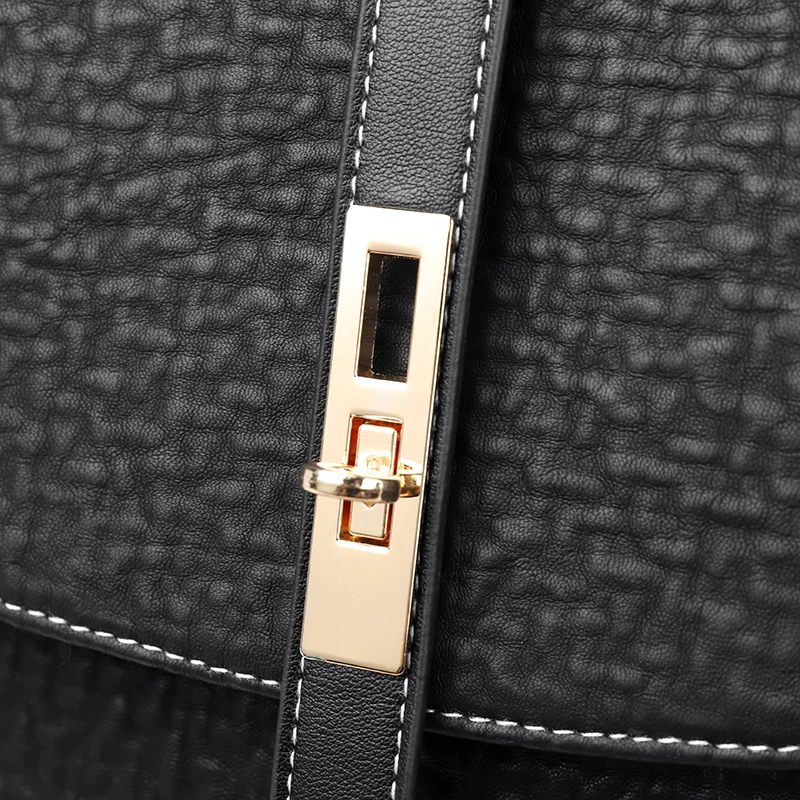
4.3 The Commuter’s Efficiency Setup
Daily commuters face unique organizational challenges—needing quick access during transit while maintaining security and efficiency. Commuter-friendly organization prioritizes:
- Transit card accessibility: External or quick-access pockets for transit passes or payment cards
- Weather adaptability: Water-resistant external pockets for umbrellas or water bottles
- Compact essentials access: Strategically placed pockets for phones, headphones, and other commute necessities
- Work/personal separation: Clear division between work items and personal essentials
Commuters particularly benefit from thoughtful leather maintenance guides for commuters that address the specific wear patterns and environmental exposures of daily transit use.
4.4 The Traveler’s Comprehensive System
Travel demands the most adaptable and secure organizational system, accommodating changing environments while protecting valuable documents and personal items. Travel-optimized compartments include:
- Document security: RFID-protected, hidden compartments for passports and travel documents
- Accessibility hierarchy: Organizing items based on when they’ll be needed during the journey
- Adaptable capacity: Expandable sections for souvenirs or variable packing needs
- Security features: Lockable zippers and hidden compartments for high-value items
Leather travel backpacks often feature more extensive compartmentalization than everyday variants, recognizing that travelers must carry a wider variety of items while navigating unfamiliar environments where efficient organization becomes even more crucial.
5. How to Evaluate Compartment Quality in Leather Backpacks
Not all compartments are created equal. The quality of materials, construction, and design directly impacts both functionality and longevity. When evaluating compartment quality, focus on these key indicators:
Materials and Linings
– Premium compartments feature durable linings that resist tearing and abrasion
– Contrasting, lighter-colored interiors increase visibility of contents
– Waterproof or water-resistant linings in technology compartments provide additional protection
– Microfiber or soft-touch materials in sensitive item pockets prevent scratches
Construction Techniques
– Reinforced stitching at stress points where compartments connect to the main structure
– Bar tacking (dense stitching) at corners and high-stress areas
– Clean, finished edges that won’t fray or separate over time
– Properly aligned zippers that run smoothly without catching
Hardware Quality
– Metal zippers that operate smoothly and resist corrosion
– Sturdy pulls that are easy to grip, even with gloves
– Quality magnetic closures that maintain their strength over time
– Snaps or hooks made from durable metal rather than plastic
Full grain leather backpacks typically demonstrate superior attention to these quality indicators, as the premium leather exterior is usually matched with equally high-quality organizational elements.

The mark of truly exceptional compartment design is the balance between structure and flexibility. Compartments should maintain their shape even when empty, yet have enough give to accommodate various items. This balance requires sophisticated construction techniques that are hallmarks of premium craftsmanship.
Understanding the differences between leather qualities is also essential when evaluating overall backpack construction. The relationship between full-grain vs top-grain leather directly impacts how compartments function and wear over time.
6. Buyer’s Guide: Selecting the Perfect Organized Leather Backpack
6.1 Assessing Your Organizational Needs
Before investing in a premium leather backpack, take inventory of what you actually carry on a daily basis. This simple exercise reveals your true organizational requirements:
- Empty your current bag completely
- Group similar items together (technology, writing tools, personal items, etc.)
- Identify which items you access most frequently
- Note which items need special protection
- Consider seasonal variations in what you carry
This analysis helps identify your organizational priorities. For some, easy access to frequently used items might be paramount. For others, maximum protection for valuable technology might be the top concern.
Consider environmental factors as well. If you’re often outdoors or commuting in unpredictable weather, features from complete guides on waterproofing leather bags become relevant to your organizational needs.
6.2 Leather Quality and Its Impact on Organization
The quality of leather directly affects how compartments function throughout the backpack’s lifetime. Premium leather creates a foundation that allows organizational features to perform as intended.
Full-grain leather offers superior structure that helps compartments maintain their shape over time. Its natural strength provides a stable framework for organizational systems, preventing sagging or collapsing that can disrupt carefully planned storage.
The break-in period for quality leather also impacts compartment functionality. Premium leather softens and becomes more supple without losing structure, allowing compartments to become more accessible while still providing protection.
Regular maintenance is essential for preserving both the leather exterior and the functionality of organizational features. Following ultimate guides on conditioning leather backpacks ensures that zippers continue to operate smoothly and compartments maintain their intended shape.
6.3 Design Integration: Balancing Aesthetics and Function
The most successful leather backpacks seamlessly integrate organizational features without sacrificing aesthetic appeal. This balance manifests in several design approaches:
Discreet Organization
– Hidden zippered compartments that maintain clean lines
– Interior organization that doesn’t create external bulges
– Color-coordinated organizational elements that blend with the overall design
Intentional Visibility
– Strategic use of contrasting materials to highlight access points
– Thoughtfully placed external pockets that enhance rather than detract from the silhouette
– Hardware elements like zippers and clasps that serve as design features while providing function
Your personal style should guide this aspect of selection. Some prefer the understated elegance of organization that’s revealed only when the bag is opened. Others appreciate more visible organizational features that make a statement about functionality.
6.4 Investment Considerations
Quality leather backpacks with superior organization represent a significant investment. Evaluating this investment requires looking beyond the initial price tag:
Long-term Value Analysis
– Higher initial cost ÷ years of use = actual annual cost
– Consider replacement frequency of lower-quality alternatives
– Factor in protection of valuable contents (especially electronics)
Priority Assessment
– Where organizational features provide the most value for your specific needs
– Which compartments will see the heaviest use and therefore need the highest quality
– Balance between organizational complexity and weight/bulk
When evaluating premium options, consider that organizational features often determine daily satisfaction more than aesthetic elements. A beautiful backpack that forces you to search for items creates daily frustration, while a thoughtfully organized design provides daily moments of satisfaction.
7. Expert Organization Techniques for Leather Backpacks
Even the best-designed backpack requires intentional organization. These expert techniques maximize the effectiveness of your backpack’s compartments:
1. Strategic Weight Distribution
Place heavier items (laptops, books) in compartments closest to your back and centered vertically. This positioning improves comfort and reduces strain by keeping the weight close to your center of gravity.
2. Frequency-Based Positioning
Organize items based on how often you use them. Daily essentials belong in quick-access compartments, while occasionally used items can be stored in deeper or less accessible spaces.
3. Categorical Grouping
Group similar items together in dedicated compartments—technology items in padded sleeves, writing instruments in pen holders, personal items in smaller pockets. This system creates logical zones that become intuitive to navigate.
4. Vertical Orientation
Store items vertically when possible, especially in main compartments. This positioning allows you to see all items at once without digging and prevents items at the bottom from being crushed.
5. Regular Reassessment
Schedule periodic “backpack audits” to remove unnecessary items and reorganize based on changing needs. This practice prevents accumulation of rarely used items that create clutter and add weight.
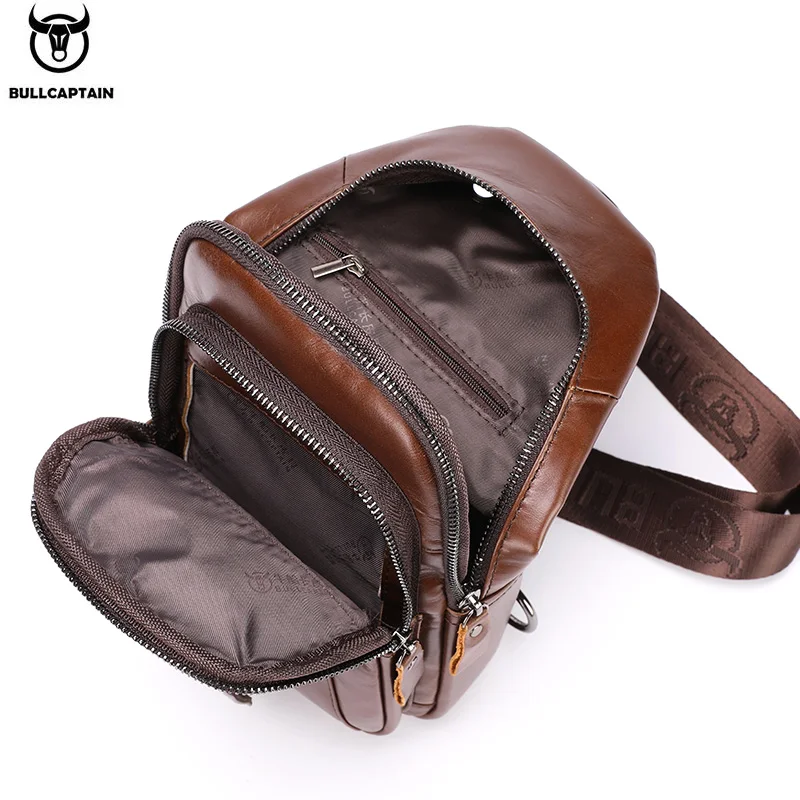
These organizational approaches work in harmony with well-designed compartments but require consistent application. The effort invested in maintaining organization pays dividends through daily efficiency and reduced stress.
For travelers, these principles become even more important, and understanding DIY leather care for travel backpacks helps maintain organizational integrity even under the demanding conditions of frequent travel.
8. Spotlight: Premium Leather Backpacks with Exceptional Organization
8.1 Executive Collection: Professional Organization Mastery
Professional environments demand backpacks that organize business essentials while projecting sophistication. Executive-caliber leather backpacks feature organizational systems specifically designed for business needs:
- Padded laptop compartments sized for standard business laptops (15-16 inches)
- Document compartments that prevent folding or creasing of important papers
- Quick-access pockets positioned for smooth retrieval during meetings
- Business card and pen organization that facilitates networking
- Thoughtful cable management for multiple devices and chargers
These premium leather backpacks for professionals balance formal aesthetics with practical organization, recognizing that in business environments, both appearance and function carry equal importance.
8.2 Voyager Series: Travel-Optimized Organization
Travel demands unique organizational solutions that address security, accessibility, and adaptability. Travel-focused leather backpacks feature:
- Anti-theft design elements like hidden compartments and lockable zippers
- RFID-protected pockets for passports and credit cards
- Quick-access compartments for items needed during security screening
- Expandable capacity to accommodate souvenirs or variable packing needs
- Weather-resistant features following principles from ultimate guides to waterproofing leather bags
The best travel backpacks anticipate the journey’s challenges, from airport security to unpredictable weather, with organizational systems designed to minimize stress and maximize protection.
8.3 Urban Commuter Line: Streamlined Daily Organization
Daily commuting presents specific organizational challenges—the need for quick access during transit, protection from weather, and seamless transition between environments. Commuter-focused backpacks excel with:
- Easily accessible transit card pockets positioned for one-handed retrieval
- Protected technology compartments that buffer against crowded transit conditions
- External water bottle pockets that prevent internal leaks
- Compact silhouettes that navigate crowded spaces without sacrificing organization
These designs recognize that commuters face unique organizational challenges—needing immediate access to certain items while moving quickly through changing environments.
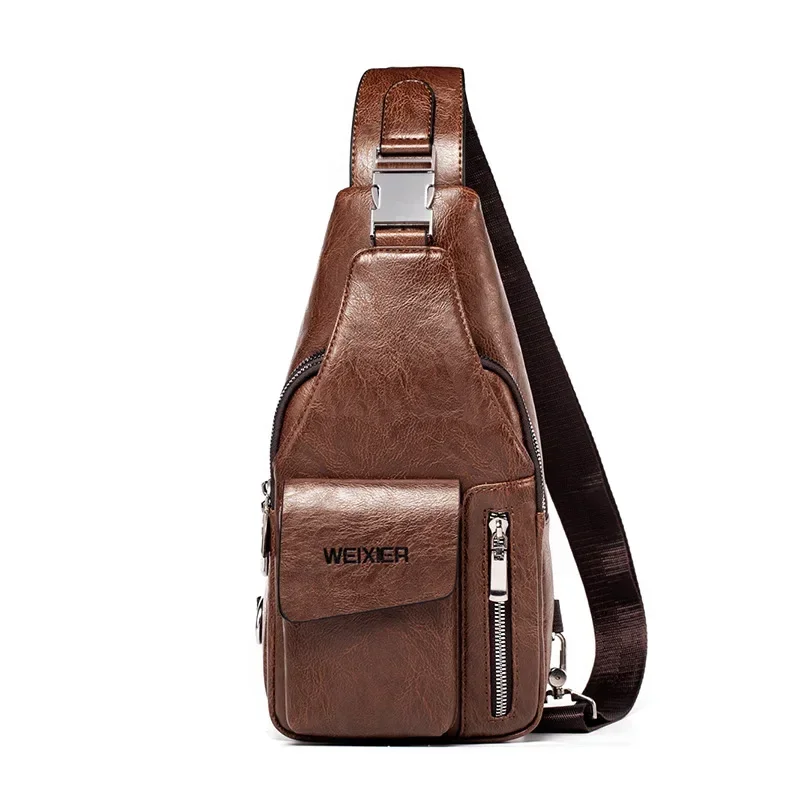
14 Inch Leather Laptop Backpack, Brown Leather Backpack, Men's Leather Backpack, Vintage Leather Backpack
Price range: $177.28 through $199.12 Select options This product has multiple variants. The options may be chosen on the product pageCarry On Leather Backpack, Roll Top Leather Backpack
Price range: $77.76 through $96.48 Select options This product has multiple variants. The options may be chosen on the product pageDesigner Men's Backpack, Men's Leather Laptop Backpack, Men's Leather Work Backpack
Price range: $158.04 through $160.04 Select options This product has multiple variants. The options may be chosen on the product pageDesigner Mini Backpack, Mini Leather Backpack, Small Leather Sling Backpack, Women's Leather Backpack
Price range: $95.76 through $98.80 Select options This product has multiple variants. The options may be chosen on the product pageDesigner Mini Backpack, Designer Women's Backpack, Mini Leather Backpack, Women's Leather Backpack
Price range: $135.92 through $137.64 Select options This product has multiple variants. The options may be chosen on the product page15 Inch Leather Laptop Backpack, Leather Briefcase Backpack
$332.96 Select options This product has multiple variants. The options may be chosen on the product page
9. Maintaining Your Organized Leather Backpack
The effectiveness of compartments and organizational features depends on proper maintenance. Regular care extends not just the aesthetic life of your leather backpack but the functional life of its organizational elements.
Cleaning Interior Compartments
– Vacuum interior spaces using a narrow attachment to remove dust and debris
– Spot clean fabric linings with mild soap and water, allowing them to fully dry before use
– Use compressed air to clean tight corners and seams
– Remove and clean removable organizational elements separately
Hardware Maintenance
– Apply silicone-based lubricant to zipper teeth that begin to catch
– Gently clean magnetic closures to remove metal-attracting debris
– Check and tighten any screws on buckles or clasps
– Clean metal hardware with appropriate metal polish to prevent corrosion
Leather Care Around Organizational Features
– Take special care when conditioning leather near zippers and organizational hardware
– Allow leather to fully dry before conditioning to maintain structural integrity
– Understand that oiling leather for waterproofing must be done carefully around organizational elements to prevent saturation of adjacent materials
Preventive Maintenance
– Store the backpack partially filled or with light stuffing to maintain compartment shape
– Keep zippers closed when not in use to prevent stretching or misalignment
– Rotate the backpack regularly if stored for extended periods
– Keep the backpack away from direct sunlight to prevent leather fading and weakening
These maintenance practices ensure that organizational features continue to function as designed, preserving both the utility and value of your investment.
10. FAQ: Common Questions About Organized Leather Backpack Compartments
How do I know what size laptop compartment I need?
Measure your laptop’s dimensions (length, width, and depth) and add approximately 0.5 inches (1.27 cm) to each dimension to ensure a proper fit with adequate protection. Most laptop compartments are designed for standard sizes (13-inch, 15-inch, 17-inch measured diagonally), but thickness can vary significantly between models.
Can I add organization to an existing leather backpack?
Yes, you can enhance organization with removable organizers, pouches, or inserts designed to fit within larger compartments. Look for options that complement your backpack’s dimensions and interior material. However, these additions cannot replace thoughtfully designed built-in organization in premium backpacks.
How do different leather types affect compartment functionality?
Full-grain leather provides the best structural support for compartments, maintaining shape over time. Top-grain leather offers good support with increased weather resistance. Genuine leather and bonded leather typically offer less structural integrity, potentially leading to sagging compartments that lose their organizational effectiveness.
What’s the optimal number of compartments for daily use?
Most daily users find that 3-5 main compartments plus 5-8 smaller organizational pockets provide sufficient organization without excessive complexity. Too few compartments forces unrelated items to mix; too many can create confusion about where specific items belong.
Are waterproof compartments necessary in a leather backpack?
While traditional leather isn’t naturally waterproof, strategic waterproofing of certain compartments—particularly those holding electronics—is valuable. Using appropriate leather waterproofing products can create water-resistant barriers that protect sensitive contents without compromising the leather’s natural properties.
How can I prevent small items from getting lost in larger compartments?
Use small organizational pouches in contrasting colors for tiny items like memory cards or earbuds. Attach key fobs or leashes to easily misplaced items. Consider bags with light-colored interior linings that improve visibility of small objects.
11. Beyond Basic Organization: Customization and Accessories
Even the most well-organized backpack can benefit from complementary accessories that enhance its organizational capabilities:
Modular Organizers
– Tech pouches specifically designed for cables, chargers, and adapters
– Compression packing cubes that maximize main compartment efficiency
– Card organizers that expand on limited built-in card storage
Specialized Protection
– Padded camera inserts that convert standard compartments into photography gear protection
– Waterproof document pouches for additional protection beyond the backpack’s natural resistance
– Protective sleeves for specific electronics that add a second layer of impact protection
Customization Approaches
– Adding internal attachment points using adhesive-backed hooks or loops
– Creating dividers from foam core covered in complementary fabric
– Using color-coded pouches to create visual organization systems
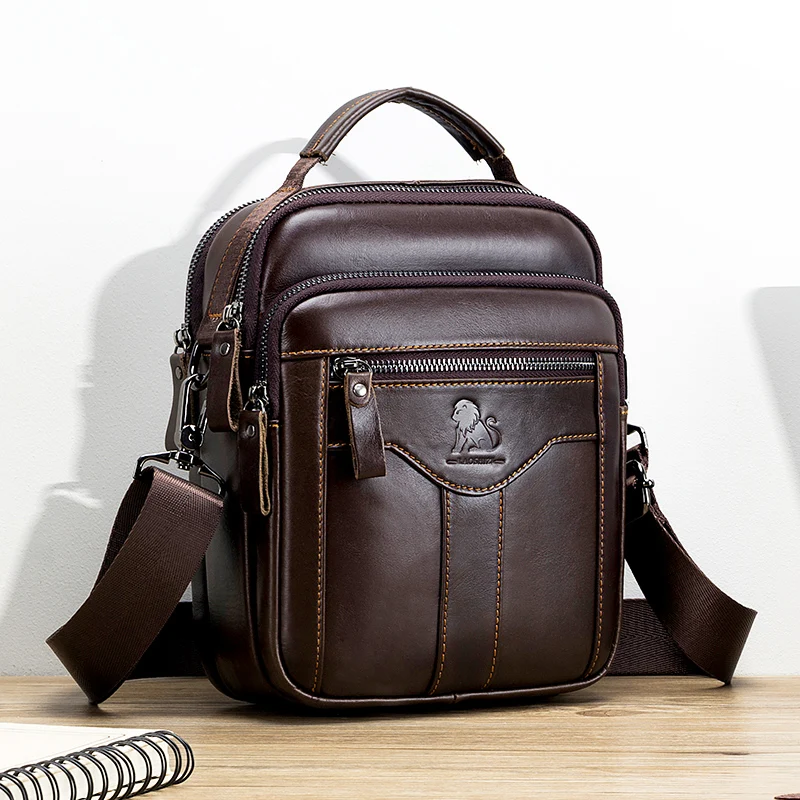
These accessories work best when selected to address specific organizational gaps in your existing system rather than as substitutes for foundational organization.
12. Why Investment in Organization Pays Dividends
The value of a well-organized leather backpack extends far beyond simple convenience—it delivers tangible benefits that compound over time:
Quantifiable Time Savings
– Average professionals save 5-15 minutes daily by eliminating searching time
– Over a year, this represents 20-60 hours of reclaimed productive time
– Transitions between tasks become more efficient with less mental interruption
Professional Advancement
– Improved preparation and responsiveness in meetings
– Enhanced perception of competence and attention to detail
– Reduced stress during presentations or important professional moments
Extended Lifespan for Contents
– Expensive electronics protected from damage
– Documents preserved in pristine condition
– Fewer replacements needed for damaged items
Mental Clarity Benefits
– Reduced daily decision fatigue from knowing where everything belongs
– Decreased stress from last-minute searching
– Increased confidence in being prepared for various situations
Proper leather backpack care and maintenance further extends these benefits by ensuring organizational systems continue to function effectively throughout the backpack’s life.
The true return on investment comes not just from the backpack’s longevity but from the cumulative effect of daily moments of efficiency, protection, and peace of mind. A premium leather backpack with thoughtful organization transforms from a simple carrying solution into an essential tool that enhances productivity and reduces stress—benefits that far outweigh the initial investment.
When you select a leather backpack with superior organizational design, you’re not just purchasing a product—you’re investing in a system that pays dividends through improved daily experiences and protection of the valuable items that accompany you through life’s journeys.

